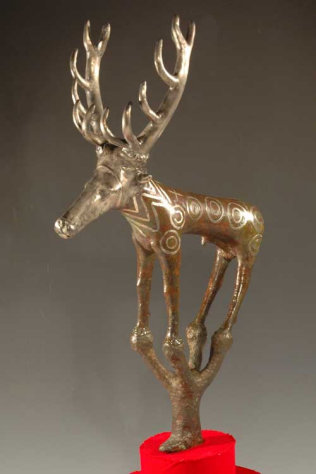‘All that Glitter is not Gold’
Research on the early Bronze Age royal tombs of Alacahöyük
Contacts: Prof. Dr. Ünsal Yalçin
Belongs to the project: The origin and development of metallurgy: issues of provenance in Anatolia
uensal.yalcin@bergbaumuseum.de
The Fritz Thyssen Foundation initially provided one year of funding for an interdisciplinary research project aimed at the analysis and geochemical characterization of metal objects from Alacahöyük in central Anatolia. The focus was on fundamental questions about the development and structure of metallurgy in Anatolia in the 3rd millennium. Here, aspects of cultural history and economic archaeology are considered alongside technological aspects.

Richly Endowed Royal Tombs
The first systematic excavations at Alacahöyük, initiated and carried out by the Turkish Republic, still in its infancy at the time, began in 1935. In the first year of excavation, four richly endowed royal tombs were discovered. In the years that followed, further graves were also found. The finds include numerous sun standards and animal statuettes made of bronze and silver, vessels with filigree work, jewelry and ornaments made of gold and silver, and a few objects made of iron. The artistic craftsmanship and materiality of the finds makes the collection one of the most important prehistoric complexes – alongside those from Ur, Maikop, Varna and Troy.Scientific Analyses of the Finds
In terms of cultural history, the finds from Alacahöyük have an important position in the development of metallurgy. In spite of this, previously there had been no scientific analyses of these finds. We started to carry out such analyses in 2009, in the Museum of Anatolian Civilizations in Ankara. We analysed all the metal objects through non-destructively and semi-quantitatively methods with a portable XRF device. Additionally, we were able to chemically analyse the samples from 80 artefacts made of silver (some of them severely corroded), bronze, and iron in the Deutsches Bergbau Museum’s Materials Laboratory, using ICP-MS. In addition, these samples were subjected to lead isotope testing in the Mineralogy Department of the University of Frankfurt, in order to analyse the provenance of the copper and silver.
Fig. 04: Non-destructive testing of all metal findings with a portable XRF analyzer.


